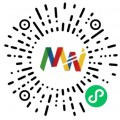Smithers predicts that after Drupa, the compound annual growth rate of the packaging printing market will reach 3.6% in 2024, reaching $504.9 billion.
Packaging and labels are increasingly important to the strategic future of the printing industry, with annual sales now exceeding $500 billion.
While traditional publications and graphics markets are stagnant or declining, rising consumption of packaged goods is driving growth. This was witnessed at Drupa 2024 earlier this year, where several OEMs launched new machines for printing corrugated board, folding cartons, flexible packaging and labels.
Smithers' "The Future of Packaging Printing to 2029" shows that the total global value of the industry will reach $504.9 billion by 2024 (constant 2023 pricing). This year, 14.31 trillion A4 printing equivalent labels, corrugated cardboard, folding cartons, flexible paper and plastics, rigid plastics and metal packaging will be printed; 1.54 million tons of ink will be consumed.
Despite global economic challenges and new sustainability requirements, a stable growth trajectory is re-emerging. This will bring the global value to $604 billion in 2029, representing a compound annual growth rate (CAGR) of 3.6%. Over these five years, output will increase to 17.12 trillion A4 equivalents.
Both digital and analog press manufacturers are developing technologies to address this market opportunity. Flexographic printing remains the most widely used printing process, especially for high-volume corrugated board, labels and flexible formats, accounting for 52.6% of output. Gravure and offset printing are also popular, primarily for printing higher quality graphics on folding cartons and flexible packaging. These account for 20.1% and 17.9% of packaging and labeling volume respectively.
For all analog OEMs, the further penetration of digital printing, particularly the latest generation of higher throughput inkjet machines, poses an immediate challenge. The quality of inkjet and electrophotographic (toner) printers is improving, even as they become more cost-competitive in long print runs. These also offer shorter turnaround times, less waste, offer greater scope for customization, and are easier to integrate with online design and ordering systems, all in line with packaging buyers’ demands for more functionality.






